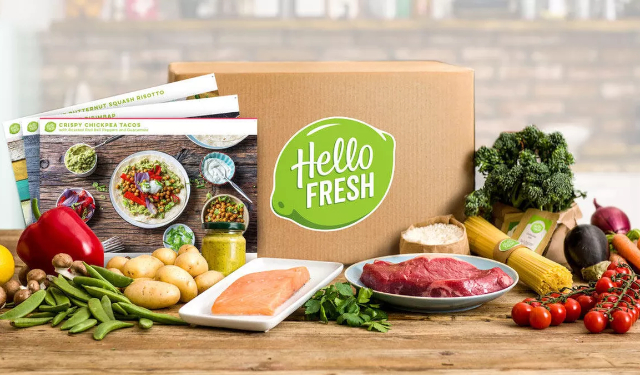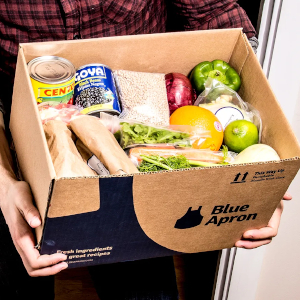I’ve often thought about how manufacturers pack food kits containing perishable items for shipping. Turns out, many food kits arrive at customers’ doors with one or more critical ingredients warmer than the 40 F – above which harmful bacteria can start to grow and reproduce…
 A selection of typical food kit ingredients: Among the foods pictured, only the pasta and rice
A selection of typical food kit ingredients: Among the foods pictured, only the pasta and rice
are sufficiently resistant to spoilage to safely stand up to a prolonged delivery trip.
A new North Carolina State University survey of 72 food kits from 12 different companies revealed some troubling results:
- More than 76 percent of the 72 boxes delivered to the survey included at least one product above the 40 F food safety ceiling.
- Deliveries from nearly 42 percent of the companies arrived above 40 F.
- Fifty percent of the companies shipped boxes with at least one meat or poultry item that arrived above 40 F.
- All deliveries from nearly 17 percent of those companies arrived over 40 degrees Fahrenheit.
- More than 58 percent of the 12 companies shipped boxes with at least one fruit or vegetable product above 40 F.
A leading cause of food contamination
Along with cross-ingredient contamination, storage and handling of perishable foods above 40 F ranks as the foremost cause of food poisoning across the western world. Millions of people suffer some form of food poisoning every year.
It troubles me, as a foodservice professional, to discover that so many food kits are arriving on so many customers’ doorsteps dangerously warm.
Millions of customers potentially affected
Home-delivered food kits, which have created a whole new grocery-sourcing option during the COVID crisis, carved out a $6.9 billion slice of the grocery market last year. It’s expected combined sales for all food kit companies will surpass $10 billion by 2024.
“Meal kit companies and online grocers experienced unprecedented growth in 2020. And while the popularity of home delivered foods and meal kits is still increasing, few details are known about the journey of these packaged foods from when they leave the vendor to when the foods are delivered and prepared in consumer homes,” Joseph Battoe, CEO of Chicago-based food data monitoring company Varcode, told Food Safety News. “Gaining a better understanding of the journey of these packaged foods would identify opportunities for providing safer, more wholesome foods to consumers and higher customer satisfaction.”
Not just temperature
In the foodservice industry we have a handy mnemonic to help us remember the cornerstones of food handling and storage safety: FAT TOM
F stands for food type. Some are more perishable than others.
A stands for acid content. The higher the acid content of a food, the safer it will be.
T stands for time. The longer a food item rests above 40 F, the more likely it is so spoil.
T stands for temperature. All perishable foods must be stored at temperatures below 40 F.
O stands for oxygen. Bacteria need oxygen to thrive and multiply.
M stands for moisture. Along with Oxygen, the presence of moisture promotes bacteria.
Food type and acidity, oxygen and moisture, and time and temperature all act as tag teams. The longer a food item is held above 40 F, the more likely bacteria will take hold.
How long as important as how high
The survey found that deliveries with travel time of 20 hours or less arrived with the lowest average box temperatures. Those with travel times of 40 hours or longer arrived with the highest average box temperatures.
“Knowing whether [the food was above 40 F] for 10 minutes or more than four hours is important for determining food safety. At present, there is no oversight or regulations, so consumers are left to trust the design, packaging, and shipping policies of the vendor and delivery companies. And, given the high temperatures noted in this project, it appears there is room for improvement,” Battoe says.
A major food kit industry issue
“Despite phenomenal industry growth, many direct-to-consumer food delivery companies are potentially facing troubling levels of customer churn — [in some cases,] more than 50 percent — and multiple studies report that consumers cite food safety as their primary reason for choosing or switching vendors,” Battoe observes.
Time for the ‘industry’ to get off its complacent butt and address the alarming potential for food spoilage in its packaging and delivery processes?
~ Maggie J.

